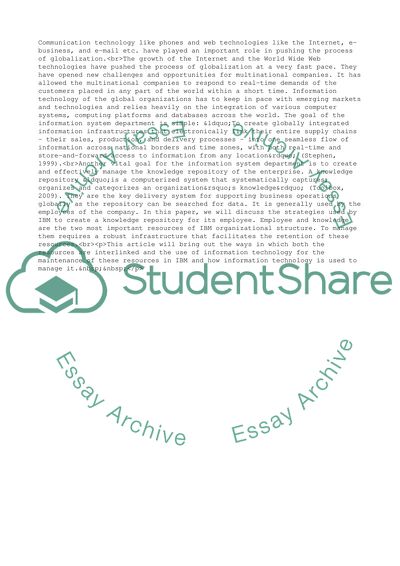Cite this document
(The Role of Information Technology in IBM Case Study, n.d.)
The Role of Information Technology in IBM Case Study. Retrieved from https://studentshare.org/business/1728973-describe-and-analyse-the-impact-of-globalisation-and-developments-in-information-technology-on-resource-management-in-your-current-organisation-or-in-an-organisation-where-you-have-worked-in-the-past
The Role of Information Technology in IBM Case Study. Retrieved from https://studentshare.org/business/1728973-describe-and-analyse-the-impact-of-globalisation-and-developments-in-information-technology-on-resource-management-in-your-current-organisation-or-in-an-organisation-where-you-have-worked-in-the-past
(The Role of Information Technology in IBM Case Study)
The Role of Information Technology in IBM Case Study. https://studentshare.org/business/1728973-describe-and-analyse-the-impact-of-globalisation-and-developments-in-information-technology-on-resource-management-in-your-current-organisation-or-in-an-organisation-where-you-have-worked-in-the-past.
The Role of Information Technology in IBM Case Study. https://studentshare.org/business/1728973-describe-and-analyse-the-impact-of-globalisation-and-developments-in-information-technology-on-resource-management-in-your-current-organisation-or-in-an-organisation-where-you-have-worked-in-the-past.
“The Role of Information Technology in IBM Case Study”, n.d. https://studentshare.org/business/1728973-describe-and-analyse-the-impact-of-globalisation-and-developments-in-information-technology-on-resource-management-in-your-current-organisation-or-in-an-organisation-where-you-have-worked-in-the-past.


